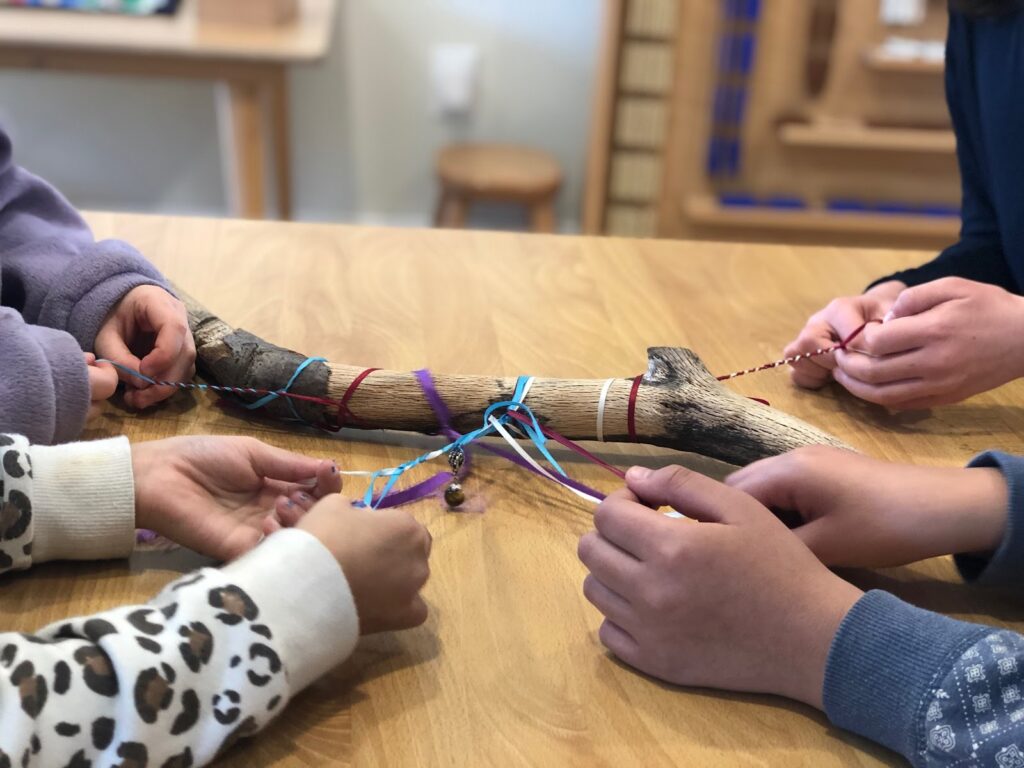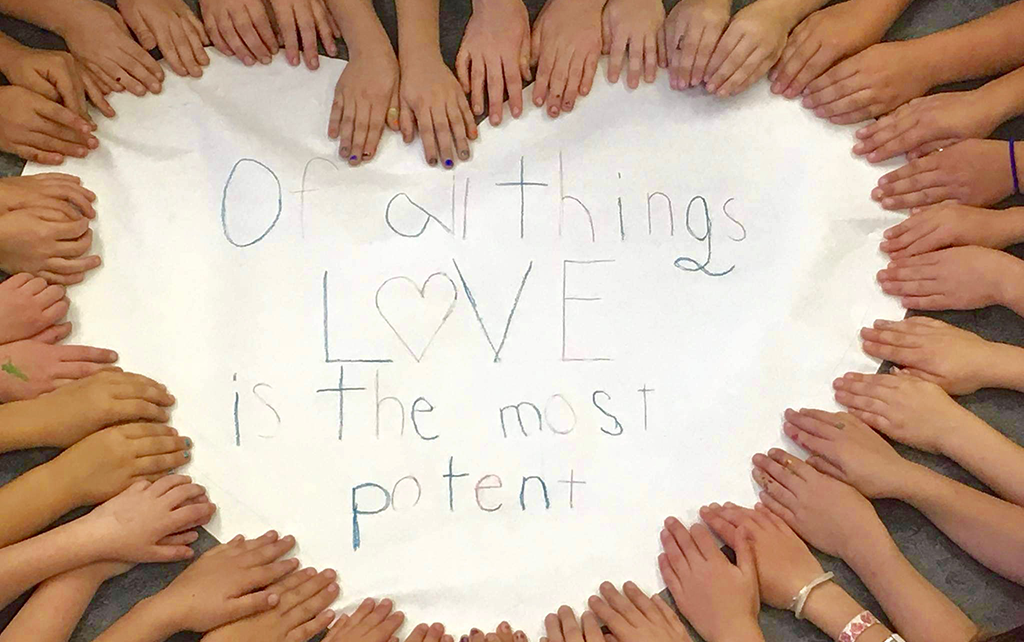In Montessori we educate the whole child and every situation is an opportunity for learning and growth. This means that along with math and language, we are teaching children how to problem solve and giving them tools for effective communication and conflict resolution. Maria Montessori defined four distinct planes of development based on her extensive scientific research, observations and work with children. The elementary child (age 6-12) is in the second plane of development.
In the first plane of development (birth through age six), children are egocentric. Their work and play with peers is parallel rather than collaborative – it is all about them and their needs. The primary environment is set up to facilitate the natural development in the first plane, and to align with the ordered and individualist nature of the child. In the second plane, children have a “gregarious instinct”. They want to interact with others. They have a sensitivity for the acquisition of culture and are drawn to moral issues. The elementary environment is set up to meet children where they are. It supports the natural and innate characteristics of the second plane child – their great imagination, their love of extremes and their need to engage with one another.
When children are given the freedom to work with their peers, they inevitably encounter conflicts. When these arise we address them like we address any other area of learning. When a child comes up to us and asks, “How fast can a cheetah run?” or, “What is the tallest mountain?” we do not simply give them the answer. We wonder with them, “Interesting question, I wonder where you could find that information?” Likewise, when a child comes to us and says, “He took the ball and I was playing with it!” We do not go to the other child and get the ball back, we ask the child how they could solve that problem. We provide them with the language that they might need to ask for what they want or express their feelings. We are not there to give all the answers in any subject, we are there to provide an environment that nurtures the child’s self-construction.
One of the cornerstones of the Montessori philosophy is not doing for the child what they are capable of doing themselves, instead we help the child to help themselves. In Education and Peace Montessori emphasizes the importances of recognizing the child as an individual with enormous potential. She advocates for providing them with the freedom to act for themselves and the opportunity to engage in true social situations in order to facilitate moral development.
One example of a way in which we facilitate conflict resolution in our classroom is peace talks. In a peace talk each child has the opportunity to share their side of the story without interruptions and to listen to how their actions affect their peers. When children feel heard, and when they truly listen, they experience empathy and take ownership of their feelings and their actions. The goal is always on solutions, not blame. Children share how they would like things to be different next time and ask for what they need from their friends to make future interactions better. They are empowered to speak up for themselves. They listen to each other and together they come up with solutions.

This is a photo from last year. At the end of their peace talk, this group decided to share something that they appreciate about each of their friends. While braiding the ribbons on the peace stick they lifted each other up. Instead of being divided by conflict, their bond was strengthened by new understanding, empathy and appreciation for one another.
In the words of Maria Montessori, “Establishing a lasting peace is the work of education; all politics can do is keep us out of war”.

